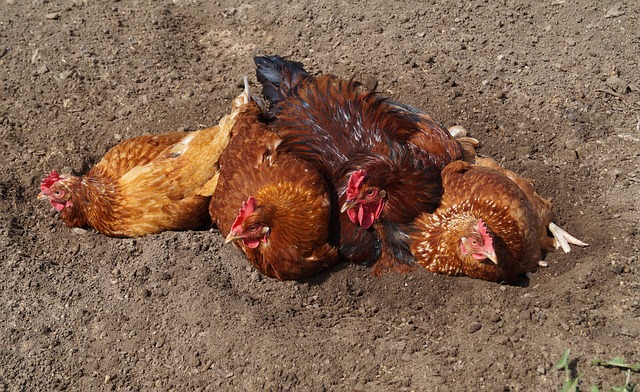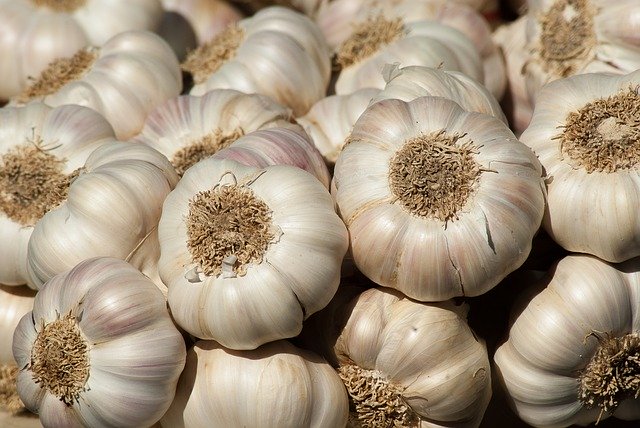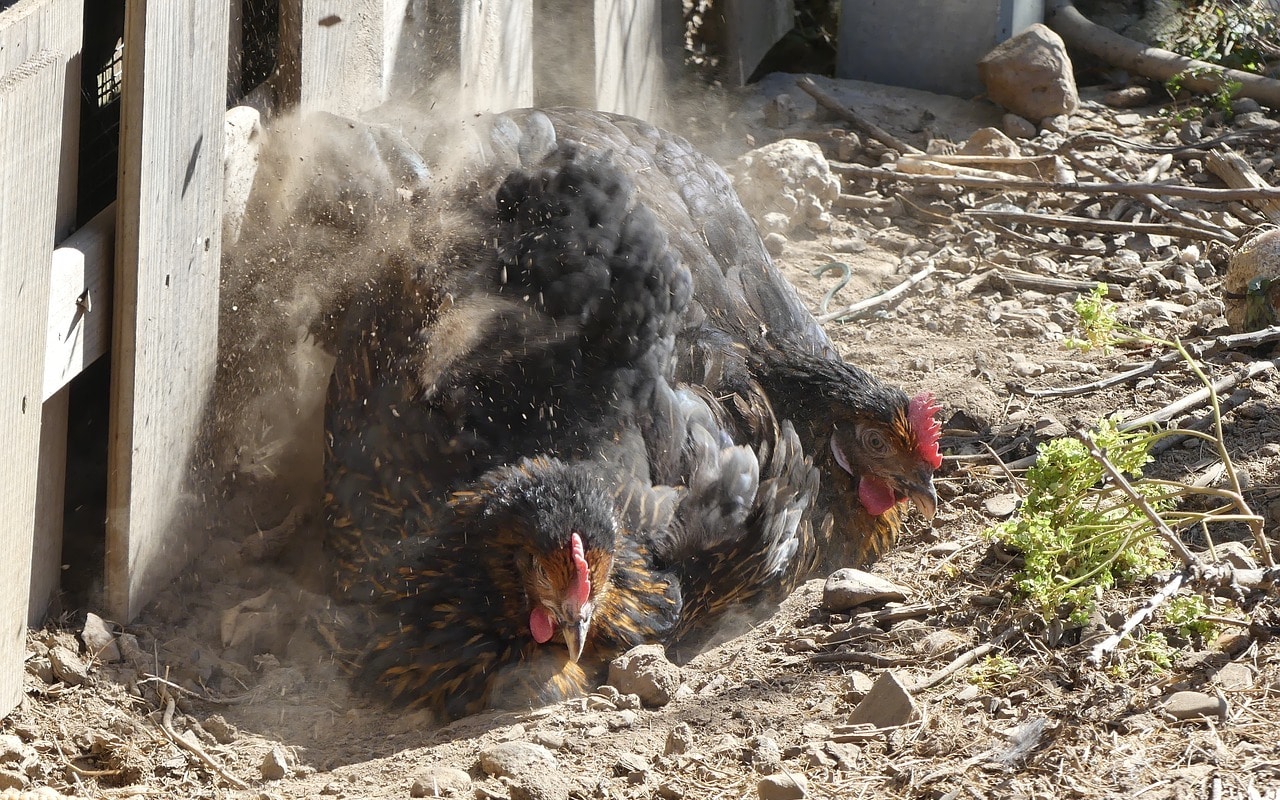The name sounds like something out of a nursery rhyme, but when all is said and done, chicken mites are something that no chicken keeper wants to have to deal with.
Luckily, knowing exactly what chicken mites are – as well as how to prevent and deal with them – can set you on your way to preventing them from becoming a problem in the future.
What Are Chicken Mites?
Creeping, crawling, disgusting little buggers, chicken mites are external parasites that pose problems not just for chickens, but for all kinds of poultry. If you raise chickens, you’ve likely heard all kinds of horror stories about these unpleasant creatures.
Chicken mites are spread in a variety of ways.
Your flock can contract chicken mites by picking them up from rodents or wild birds, by coming into contact with infected birds or even if you bring them into the coop on your clothing or shoes.
These pests are more common during the summer months, but they can thrive in colder weather, too.
Although they sound benign, with a life cycle that lasts a maximum of seven days, a single chicken mite can lay more than 100,000 eggs during this time – meaning they have the potential for some pretty serious devastation.
Chicken mites don’t just sound disgusting – they are disgusting.
And an infestation can spell disaster for your flock.
Although there are several different types of chicken mites, including those that live on the chickens themselves as well as others that hideout in cracks and devices in the coop, they’re all problematic.
Chicken mites bite their hosts, extracting blood to fuel their voracious breeding behaviors.
Chicken mites can cause your birds serious discomfort as well as health problems such as anemia and, in extreme cases, even death.
Plus, they can subject your chickens to a ton of unnecessary pain and suffering.
Chicken mites are tiny little creatures, with adult females of the species only about 1/32” long. You likely won’t be able to see them.
They have flat, oval-shaped bodies that are white when unfed but are bright red when the pests are fully engorged after a blood meal.
They also have small hairs along their backs and whip-like mouthparts.
Also known as poultry mites, these pests typically feed on all types of birds, including sparrows, pigeons, starlings, and of course, chickens.
There’s some evidence to suggest that chicken mites can transmit diseases – and they can cause a whole host of problems for you and your flock.
Types of Chicken Mites
There are several types of mites that can infest your flock of chickens. Here are some of the most common.
Red Mites
Often referred to generally as just chicken mites, red mites are incredibly irritating to deal with.
They are usually spread by wild birds that come into contact with your chicken coop.
These mites hide in the darkest areas of the coop during the day, then come out at night to munch on your chickens.
Black and red spots on the skin of your chickens are the most common indicators of a red mite infestation. If left untreated, red mites can cause anemia and even death.
Northern Fowl Mites
Northern fowl mites are similar to red mites in that they feed exclusively on your chickens.
However, these pests spend their entire lives on your chickens instead of in darkened corners of your coop.
While that means they can sometimes be easier to treat, it also means that their effects on your chickens will be much more pronounced.
Scaly Leg Mites
Another common parasite – and a term that is often used interchangeably with chicken mites – is the scaly leg mite.
Scaly leg mites infest the legs of chickens instead of the vents or wings.
You’ll notice that your chickens have them because you will see that the scales on the feet and legs of your chickens are standing straight up.
Scaly leg mites can be super painful for your chickens because they will suck blood from your chickens’ legs – just as regular chicken mites do.
You can also treat scaly leg mites with a garlic juice solution. Before doing this, you should wash your chickens’ legs gently with warm soapy water. This will brush the ear mites off.
Depluming Mites
Depluming mites are similar to the scaly leg mite and are actually closely related. these pests, however, attack the feathers of your birds by burrowing into the feather shafts.
They suck all nutrition out of the shaft, causing your bird to pluck out her own feathers in pain and irritation.
Tropical Fowl Mite
Tropical Fowl Mites are not very common in most of the world.
Found in warmer climates, this pesto is more common in places like the southern United States, Australia, South America, and other tropical locations.
Tropical fowl mites are usually found on commercial poultry farms.
They can be passed to humans, so it’s important to prevent these mites on your chickens if you live in an at-risk area.
What is the Difference between Lice and Mites?
Lice and mites are terms that are often used synonymously, but the reality is that lice and mites, as they pertain to chickens, are two separate beasts.
Both are extremely annoying and extremely small, but the difference is in how the two types of parasites survive.
Chicken lice live by feeding on the skin scales and debris in the feathers of your chickens. These pets live their entire lives on your birds.
Mites, on the other hand, feed on blood. While some live on chickens, others live in housing and feed at different times.
What they have in common is how they are transmitted.
Both lice and mites are often transmitted by wild birds, although that’s not the only way these pests can get into the coop.
What Are the Symptoms of a Chicken Mite Infestation?

There are several telltale signs that you have an infestation of chicken mite in your backyard flock. Here are some key indications.
Reluctance to Engage in Normal Behaviors
One of the most common signs and symptoms of a chicken mite infestation is a flock (or even just an isolated group of chickens) that are suddenly resistant to go into the coop at night, use the nest boxes, or use the dust baths.
Normally, chickens will be able to remove mites by rolling in their dust baths.
However, during the hottest, most humid months of the summer, your chickens might not want to bathe – or they might not get the opportunity to do so.
It’s times like these that chicken mites can easily get the upper hand.
Excessive Preening
If your chickens suddenly start grooming themselves more than normal, that’s another good sign that chicken mites have invaded the premises.
Chickens who bite their feathers around their vents and around their wings likely have mites.
If you take a closer look, you may notice red or black spots near the vent or wings of your chickens. You might discover these same spots if you inspect the roost bars.
Feather Loss
Chickens who have started to lose feathers may be suffering from chicken mite infestations.
This is especially true if you notice significant feather loss around the wings or vents.
Loss of Appetite
An infested chicken is usually going to eat much less food.
If you notice this symptom accompanied by any of the other issues, it could indicate a very severe red mite infestation.
Drop in Egg Production
Chickens who are infested with mites not only are going to struggle to produce eggs, but they’re going to be more reluctant to go into the nest boxes (which is often where these biting pests like to hide).
As a result, you may notice a serious diminishment in egg production.
Mite Eggs
If an infestation is severe, you might even notice eggs at the base of the feathers. Not all mites lay eggs here, but some do – it can be a good confirmation of a serious infestation.
Treating Chicken Mites
Grossed out yet? Don’t worry. There are plenty of ways you can treat chicken mite infestations in your coop.
Insecticides
Many people turn to insecticides or other commercial cleaning solutions as the first line of defense against chicken mites, but really, these should be the last option.
Most chicken mites chemicals actually aren’t approved as safe to use on chickens, so using them is off-label.
Chemical treatments like Sevin dust are not safe to use on chickens in any form.
Coop Spray
A coop spray is a good way to get rid of chicken mites in the coop. You will want to start by thoroughly cleaning out the coop.
This means removing any and all bedding and dousing the floors, walls, roost bars, and nest boxes with a mixture of water, cooking oil, and dishwashing liquid.
This mixture will suffocate the chicken mites when you mix it at a ratio of two cups of water to one cup of cooking oil to one tablespoon of dish soap.
Clean your coop thoroughly (at least once) with this mixture before putting your chickens back in the coop.
Then, after you’ve returned them, continue spraying the coop twice a week to keep the mites at bay.
Diatomaceous Earth
Diatomaceous earth, particularly the food-grade kind, is another good treatment for chicken mites.
Spray this onto the floor of the coop and in the nesting boxes. You can also rub it into the roosts in conjunction with the coop spray we described above.
Diatomaceous earth contains tiny particles that kill mites when they come into contact with them.
You may also find it prudent to dust your chickens with food-grade diatomaceous earth. Just don’t get the dust in their eyes or lungs.
Herbs
Herbs, with their natural oils and extremely strong scents, can be used to defend against mites as well as other pests.
There are lots of herbs and plants you can use to create a natural line of defense against chicken mites, too.
Wormwood is one such example. This plant can be tied into bouquets or made into sachets for the nesting boxes. Mites don’t like the scent of wormwood and will stay far away.
Some other herbs that are effective at repelling mites are garlic, chamomile, and thyme.
You might also consider mint, lemon balm, and lavender – not only are these herbs aromatic and good at resisting mites, but they’ll also freshen up your coop!
You can make a bouquet out of these herbs and hang them in the coop, or you can sprinkle them around. It’s up to you.
Iron
No matter which kinds of treatments you use, you are going to want to supplement your chickens’ iron for a few days.
When chickens are infested with mites, they become anemic because they lose blood to these blood-sucking parasites.
Add some iron-dense foods to your chickens’ diets. Some good options include:
- Hard-boiled or scrambled eggs
- Cooked poultry of fish
- Meat scraps
- Seafood
- Beet greens
- Spinach
- Sweet potato
- Dandelion greens
- Broccoli
- Kale
- Collards
- Watermelon
- Raisins
- Wheat
- Strawberries
- Oatmeal
- Molasses
- Cornmeal
Many of these foods will also improve the immune system of your chickens – a necessary addition if your chickens are trying to battle these pests.
Garlic

Chicken mites, like many other parasites, absolutely hate garlic.
You can spray your chickens with garlic to form a highly effective barrier. It has a great kill rate and will work for 24 hours after being applied to your birds.
You may not want to pick them up and cuddle them for a while, though!
If you spray your chickens with garlic, be sure to concentrate it around the wings and vent, where mites like to hang out.
Be Timely
While any of these treatments will be effective no matter what time of day you use them, it’s best to use most at night.
This is when mites are the most active, as they’ll come out of the coop at this time to feed on your chickens.
How to Prevent Poultry Mites
So you’ve staved off an infestation of chicken mites – good job. Now, how do you prevent them from coming back ever again?
There are several steps you will want to take.
Turn to Garlic Again
Garlic is not just effective at getting rid of chicken mites – it’s also great at preventing them, too.
Most parasites dislike the taste of blood that’s getting a regular dose of iron, so consider adding iron to your chickens’ diets.
Garlic will not only help to repel pests, but it will also boost the immune functioning of your hens. Add a scoop of garlic each day to your chickens’ feed for the best results.
Rely on Diatomaceous Earth…Again
Yep, another old favorite! Diatomaceous earth can help prevent chicken mites just as well as it can treat them.
Start by building a dust bath area for your chickens filled with dry loose dir tor sand.
Then, add some food-grade diatomaceous earth and wood ash to help prevent parasites.
Supplement with Apple Cider Vinegar
Apple cider vinegar is another great treatment for preventing poultry mites.
Apple cider vinegar has healthy probiotics to boost your chickens’ immune systems – but at the same time, it can help keep chicken mites at bay.
Engage in Regular Inspections
Keep a close eye on your chickens to make sure they’re staying healthy and mite-free.
It’s all too easy for them to contract chicken mites, so you will want to monitor them for any changes.
Being vigilant about your chickens and what kinds of behaviors and appearances are normal is absolutely vital.
Regularly inspect your chickens, paying extra close attention to the vents and beneath the wings.
This will help you spot pests before they can get the upper hand. Often, being able to catch chicken mites early on can make a world of difference.
Vaseline
If your chickens are suffering from scaly leg mites, you will need to use vaseline or some other type of petroleum jelly.
Spread Vaseline thickly on the legs of your chickens to help it penetrate deep into the scales and suffocate the mites.
Neem Oil
Many chicken keepers swear by neem oil as a defense against chicken mites. You can use it on the roost bars and in the nest boxes.
All you need to do is get it into the crevices and let it dry before the hens are let back in.
Improve Your Defenses
Make sure wild birds aren’t coming into contact with your chickens. Of course this is definitely easier said than done – however, it’s vital.
Take measures to prevent birds from sitting on your coop, and keep the coop clean at all times.
Clean up any spilled food or anything else that might attract birds and the priests.
Also, if you introduce new chickens to the flock, make sure you quarantine them immediately upon their arrival to make sure they aren’t infested with mites that can infest your existing flock.
Don’t Stress About Chicken Mites
Chicken mites are definitely not fun – in fact, adults can survive for up to four months without feeding, meaning it can be incredibly difficult to eradicate a population once it’s settled into your coop.
However, if you’re smart about taking preventative steps to guard against these pests, you shouldn’t have to worry about them invading your flock.
Keep a close eye on your birds and remember to keep things clean and tidy, and chicken mites should be the least of your worries.
